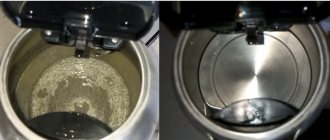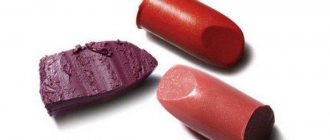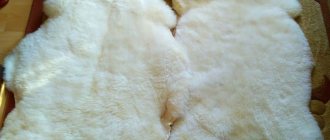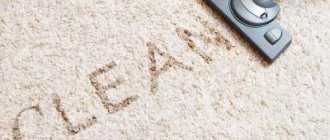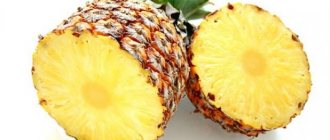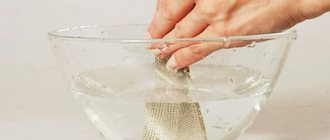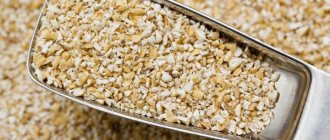Many kitchen utensils include stainless steel appliances. Such spoons and forks serve their owners faithfully for a long time, without becoming covered with corrosive deposits. But there is also a fly in the ointment - over time, plaque appears, and returning shine can be quite problematic.
We have put together all the proven methods, from which you will learn in detail how to clean stainless steel spoons and forks at home. Watching the video will make organizing the process much easier.
Boiling spoons and forks in soda solution
The first and easiest way to clean cutlery is always available at home. This powder has proven to be an excellent cleaning agent for many materials. Boiling soda is a quick way to clean your appliances of dirt and old grease, making them shiny again.
- Pour about two liters of running water into the pan (choose a container a couple of times larger in volume than you are pouring liquid), immerse spoons and forks in the pan. Place on the stove.
- Add 2 tbsp. soda and salt or citric acid.
- Over high heat, bring the solution to a hot state (boiling is not necessary) and keep for at least 20 minutes. If the dirt is ingrained, increase the “cooking” time.
- Wait for the liquid to cool and rinse.
Important: pay attention to the additional coating of the devices - if there is decorative enamel or aluminum inlay, this method is contraindicated.
Features of cutlery made from different materials
Cutlery can be made from various metals and alloys. Sometimes the manufacturer uses additional coating to make forks and spoons more decorative. The properties of the material determine the characteristics of the product.
Stainless steel
Stainless steel cookware and appliances began to be produced after the invention of the 18/10 alloy, which contains 18 parts chromium and 10 parts nickel. Stainless steel immediately created a sensation.
Utensils made from this metal:
- does not oxidize like aluminum;
- does not become rusty;
- has an attractive shine.
Stainless steel has low thermal conductivity, which means the risk of getting burned by hot food when using cutlery is reduced. Stainless steel products can be easily given a variety of shapes, so the design of cutlery can be quite sophisticated.
To further refine the forks and spoons, they can be coated with silver and gold and artistic painting can be applied. Regular stainless steel cutlery does not require complex care and can be washed in the dishwasher. Products with complex shapes and original decor require additional cleaning.
Gold plated
Cutlery made of silver, cupronickel, and stainless steel can be plated with gold. Such products are intended for special occasions; they are not used daily. The thicker the gilding layer and the less often the devices are used, the more durable the decorative coating will be.
You need to take care of gold-plated items with care. They are washed by hand, and then the shine is restored to the devices by polishing them with a suede cloth. The choice of care products for such spoons and forks should be approached carefully. Aggressive compounds are not suitable for gold-plated metal.
Silver
Silver cutlery is prized for its antibacterial properties. In addition, such products look aesthetically pleasing and expensive. A collection of silver spoons can be given as a valuable gift.
Noble metal requires careful handling. Silver cutlery should not be washed in the dishwasher; chlorine-containing products should not be used to clean it. Due to improper care, the metal may become cloudy.
Cupronickel
Cupronickel silver devices are made of a copper-nickel alloy, the ratio of components in which may vary. Cupronickel silver spoons and forks are often coated with gold or silver. There is a misconception that cupronickel devices can be harmful to health, this is not true.
The advantages of products made from this alloy include the fact that they look expensive, do not corrode, and can last from generation to generation. Cupronickel has low thermal conductivity. The disadvantage of metal is that it can darken if there is excess moisture. In general, the material is more demanding to maintain compared to stainless steel.
Soda + glue
Using this method, you can both clean cutlery and tidy up other dishes made from this material. True, you need to use not ordinary soda, but soda ash. This powder can be found at any hardware store.
- Take the required amount of liquid into a saucepan, add 100 grams of soda and pour in half a glass of office glue. Heat and stir the ingredients until smooth and completely dissolved.
- Carefully, so as not to get burned, place the cutlery in the pan and leave on the stove for two hours.
- Wait until the spoons are at an acceptable temperature and rinse them under running water with a sponge and dish soap.
Tip: For hard-to-reach areas on the forks around the tines, use a brush, knife or scraper to remove the softened coating.
Care Tips
Compliance with a number of recommendations will increase the service life of cutlery.
- Do not let dirt dry, wash dishes immediately
- If the stain has dried, pre-soak the forks and spoons.
- The choice of cleaning method for items depends on the raw materials they are made from.
- For example, we clean stainless forks and spoons with a paste of soda or salt, but we clean gold-plated objects with wine vinegar or egg white.
- We do not use cleaning agents or brushes that may leave scratches.
- Always wipe cutlery dry after washing.
- Store in a special place where moisture will not enter.
So, the most common methods for cleaning forks and spoons so they shine at home are described above.
You just have to choose the method you like best. Giving cutlery a new life is not difficult, and with proper care, it can also be done quickly.
Soda + soap
From these components, you can prepare a homemade specialized solution for stainless steel, and then pour the resulting solution into an empty bottle from a purchased product and store until required.
- Rub half a bar of soap with a grater and add a liter of warm water. Leave for at least ten hours - this time is necessary for the soap mass to completely dissolve.
- After the expiration date, use a blender. This way you will get rid of possible lumps.
- Add four tablespoons of soda and 1 teaspoon of lemon.
Tip: if you intend to store the product for more than one day, shake the container periodically.
Choosing a method taking into account contamination
All methods can be divided into mechanical and chemical. If the cutlery does not have an elegant design, it is better to choose mechanical cleaning. The impact of chemicals will be more effective for complex-shaped, richly ornate stainless steel appliances.
Yellow plaque
Even stainless steel spoons that are resistant to external influences begin to turn yellow and become coated over time. It's all about low-quality tap water, saturated with chlorine and other substances. Knowing how to clean stainless steel spoons at home will help you quickly return your favorite cutlery to a shiny look.
The first thing you can do to solve the problem of yellow spots is to wipe the cutlery with a cut onion or potato. After the spoon, rinse thoroughly under running water and wipe dry with a towel.
You can also use coffee grounds. The smallest particles of undissolved coffee are an excellent abrasive that carefully removes yellow deposits from the surface of spoons or forks. But as practice shows, the most effective method is to use special professional products for cleaning stainless steel products.
Old fat
The following products will help you remove old grease from the surface of stainless steel cutlery:
- Vinegar solution. To prepare it, dissolve 30 ml of vinegar and a couple of pinches of soda in 100 ml of water. After thoroughly stirring the resulting product, soak a soft dish sponge in it. Use this sponge to wipe forks and spoons. If the effect of using this product is weak, the amount of vinegar and soda can be increased. Vinegar and soda not only clean spoons of old grease, but also restore their original shine.
- Coffee grounds. In order to dissolve the layer of fat on the shiny surface of spoons and forks, use the grounds that remain from brewed coffee. This abrasive mass is applied to a sponge, which is used to wipe dirty equipment. A few drops of ammonia will help enhance the positive effect of using coffee grounds.
- Toothpaste, ammonia. These two ingredients are mixed in equal proportions. After this, using a piece of soft cloth, the resulting powder is applied to the contaminated areas of the cutlery. If the fat does not come off the first time, rub the appliances again and let them stand for a while (about fifteen minutes). Afterwards, wash the forks and spoons under running water and, after wiping them thoroughly dry, put them in a cabinet drawer for storage.
- Lemon and wool fabric. A whole lemon is cut into slices. Each fork and spoon is rubbed with lemon slices, and then thoroughly wiped with a woolen cloth. Lemon juice not only works great on grease, but can also remove unpleasant white deposits from hard water.
Tea plaque
A dark coating most often remains on the shiny surface of stainless steel from strong tea brewing. The following tools will help you remove it:
- Table vinegar. Before you start cleaning, be sure to protect your hands (wear rubber gloves). Next, a soft cloth (for example, gauze) is generously moistened with vinegar. Use it to wipe each spoon and fork separately. You should not wash cutlery right away. Let them lie for a while, lubricated with a vinegar solution (no more than half an hour). Afterwards, the stainless steel cutlery is thoroughly washed and it begins to shine and shine again.
- Baking soda and food mustard powder. For this method, hot water is filled into the container in advance. For one liter of water, add a tablespoon of soda and a pinch of dry mustard powder. Dip stainless steel cutlery into the resulting solution and leave for half an hour. Afterwards, the cutlery is removed and thoroughly wiped with a toothbrush.
Soda + salt
You can wash items that have lost their presentation by giving them a “bath.”
- Boil enough water in a saucepan so that spoons and forks lowered into it are completely covered.
- Add salt and baking soda at random and stir. Calculate the number of components relative to the items being processed and water.
- Remove from the stove, dip the equipment in the solution and leave for three hours to soak. Rinse afterwards.
Methods for cleaning stainless steel spoons
Cleaning cutlery is quite a tedious process. You can restore the shine to tarnished stainless steel stocks using a variety of methods.
There are several options for caring for stainless steel cutlery:
- boiling or soaking method;
- use of improvised means;
- use of household chemicals.
Folk
A variety of folk remedies, which a good housewife always has, will help you quickly clean cutlery at home.
Table salt will clean tarnished stainless steel appliances to a shine. What do we have to do:
- in a deep container, place food foil on the bottom (shiny side up) and place all the cutlery that needs to be cleaned;
- Dissolve a pinch of salt in a liter of hot water;
- pour the resulting mixture into a container with foil;
- place the container on the stove (it is important to ensure that the dishes are completely covered) and leave to simmer for fifteen or twenty minutes;
- After cooling the water, remove the equipment and rub it with a dry, clean towel.
Tooth powder or baking soda are effective tools for removing minor stains. A paste with a gel-like structure is good for cleaning spoons. Soda should be mixed with a few drops of water to form a paste.
What do we have to do:
- pour hot water into a bowl with high sides, soak forks and spoons;
- using a soft bristle brush with a small amount of paste or soda, clean the pre-soaked cutlery (one at a time);
- thoroughly rinse off the remaining paste or soda under running water;
- Wipe cutlery dry.
Vinegar will help quickly clean spoons of tea deposits and restore their mirror shine. When working with vinegar solution, your hands must be protected with rubber gloves.
What do we have to do:
- a small piece of natural (preferably cotton) fabric is generously moistened with vinegar;
- Contaminated spoons and forks are thoroughly wiped with a prepared rag and left alone for half an hour;
- Afterwards, the cutlery is rinsed under running water and rubbed with a dry towel.
If you have a lot of cutlery, you can save time. To do this, they are immersed in a previously prepared vinegar solution and left in this form for twenty minutes. Afterwards, the devices are washed and rubbed until shiny.
Potato starch or just fresh, sliced potatoes will help you quickly clean stainless steel spoons and forks. To do this, contaminated utensils are rubbed with raw potatoes and then washed in warm water.
You can also use the liquid in which the potatoes were boiled:
- the water after boiling the potatoes is poured into a separate pan;
- cutlery is immersed in the broth and left for ten minutes;
- After rinsing the spoons in the broth, they are washed under running water and wiped dry with a towel.
Coffee particles remaining in the coffee grounds after preparing an aromatic drink, like small abrasives, quickly remove stains on stainless steel cutlery. What do we have to do:
- pick up a little coffee grounds on a sponge;
- wipe contaminated areas;
- Rinse cutlery and dry with a clean towel.
An onion will help remove dark stains on the mirror surface of stainless steel spoons and forks.
What do we have to do:
- cut the fresh onion in half;
- wipe dirty utensils with the cut side of the onion;
- Wash the forks under running water.
For those who relax in nature, it will be interesting to know that dirty stainless steel spoons can be easily cleaned using the ash of birch or aspen firewood. The ash is collected, sifted to remove large particles and placed in a jar. Then, as necessary, rub dirty cutlery with ash. After cleaning with ash, do not forget to rinse the dishes with clean water.
Modern
The stores offer a huge range of household chemicals for cleaning stainless steel appliances. Powder, paste or gel - everyone can choose the most convenient option for themselves. Before using household chemicals, you must carefully read the manufacturer's instructions.
What do we have to do:
- dilute 250 ml of detergent (for example, Domestos) in five liters of water;
- Pour the resulting solution into the dirty dishes and leave them to sour for an hour;
- after spoon and fork, rinse thoroughly, first with detergent and then under running water.
You can achieve an ideal mirror shine if, after the cleaning procedure, you additionally polish the devices with a soft cloth. Do not exceed the contact time of the detergent with the surface of spoons and forks. It is also necessary to ensure that the product does not contain acid (its effect leaves dark spots on the stainless steel).
Boiling
One of the proven methods for cleaning stainless steel spoons at home is boiling. This method is good because in a minimally short time, without much effort, you can restore a large number of spoons and forks to their original form. There is no need to clean each item individually.
How it works:
- Prepare a solution for boiling. You can use the following combinations:
- salt 2 tbsp per liter of water;
- soda 2 tsp, one egg shell per liter of water;
- baking soda 7 tbsp, half a bottle of office glue per liter of water;
- soda 4 tbsp, mustard powder 4 tbsp per liter of boiling water;
- soda powder 2 tbsp, liter of vinegar, citric acid 2 tbsp per half liter of boiled water.
- Place a piece of foil on the bottom of the boiling container, then dirty spoons and stainless steel forks.
- The devices are filled with the prepared solution and boiled for one hour over low heat. The digestion process should only be carried out in a well-ventilated area.
- Afterwards, remove the container from the heat and allow to cool. Spoons and forks are removed and washed under running water. Already clean cutlery is thoroughly rubbed with a dry, clean towel.
Potatoes and its decoction
There are several ways to clean stainless steel with potatoes - using a fresh root vegetable or its decoction:
- In the first case, it is necessary to cut the tuber into two parts and rub the darkened area with the secreted juice. This method is bad only because it requires patience on your part - you need to process each item separately.
- The second option involves boiling spoons in the broth left after cooking potatoes, which allows you to peel items in batches. The effect is achieved similar to that when using fresh vegetables, because the liquid is sufficiently saturated with starch.
What do you need to know before cleaning your silver?
What is the alloy of your silverware?
What cleans one silver well will leave stains on another. This especially applies to home remedies (soda, salt, citric acid, etc.). The reaction of silver to a cleaning agent depends on the amount of impurities in the composition. So in sample 925 there are about 7-8% impurities, and in sample 800 there are about 10-12%. Therefore, check what the alloy consists of or test the product on a small piece of silver.
Silver service on a festive dinner table
How and with what to polish silver utensils
Silver is a soft metal and scratches easily. Therefore, do not polish it with paper towels, napkins, toilet paper or other rough materials. It is better to use soft flannel material for these purposes.
As for polishing, do it in long, back and forth strokes. Polishing in small circles, on the contrary, is a bad idea. This way there is more chance of scratching the devices.
An example of polishing silver utensils with soft materials
What to do after cleaning and polishing silverware
Clean your silver a week or at least three days before using it. The fact is that only a few days after cleaning does a protective layer form on the surface of the silver, preventing it from changing color. If you do not follow this rule, the silver will quickly darken and cleaning will go down the drain.
Silverware in a case
Why Abrasives Are Not Always Good for Cleaning Silverware
Tooth powder, soda, etc., which are so often used to clean silver, are abrasive substances. If you rub silver with them intensively or do not maintain the proportion, the dishes can be ruined. Therefore, remember, it is better to leave one small speck than to completely ruin the device.
Dark silverware
Ammonia + chalk
It is not recommended to replace the bulk component, since it is in crushed form that it has “gentle” abrasive particles that will not harm the surface.
- In a mortar, crush the chalk as finely as possible.
- Transfer to a container unsuitable for food purposes and gradually introduce ammonia. As a result, you should end up with a fairly liquid pulp, somewhat reminiscent of full-fat kefir.
- Remove stains with the resulting mixture. Rinse.
Removing plaque and scale
To dissolve layers of scale and plaque on the walls of a thermos, use household products with acidic and alkaline components, which are found in every home.
Lemon acid
Citric acid will help remove any dirt from the walls. 2 teaspoons of the product are poured inside and poured with boiling water. Close tightly for a day. Lemon removes plaque and musty smell. Instead of powder, you can use lemon juice.
Vinegar essence
Before cleaning, prepare a 9% vinegar solution from the essence. Fill the flask to a third of its volume and add hot water to the top. The thermos is shaken regularly. You can throw pieces of sponge into the flask, which, when shaken, will remove traces of black tea from the walls. Vinegar is used for stainless steel and glass flasks.
Sodium bicarbonate
Tea soda perfectly removes plaque from the walls of a thermos, acting first as a soft abrasive, then as an alkali. 2-3 tablespoons are poured into the flask and filled with water (50-60 °). After closing the thermos, shake vigorously so that the powder particles remove the layer of dirt from the walls. Then leave for several hours.
baking powder
You can clean the walls with baking powder, which is a mixture of basic and acidic salts. Depending on the volume of the thermos, add 2-4 tablespoons of the mixture and fill with warm water.
Rice and pearl barley
Pour ½ cup of cereal into a thermos and pour boiling water to the top. After closing the flask, shake vigorously so that the cereal cleans the walls. You need to shake the vessel regularly; rice or barley acts as an abrasive. To enhance the effect, you can add a spoonful of tea soda. Cleaning time – 2-3 hours.
Carbonated drinks
Traditional methods suggest washing a contaminated flask with soda in the following ways:
- for minor stains, pour a warm drink for several hours;
- the coating is strong - the soda is heated until it begins to boil and kept in the flask for 10-12 hours.
According to the experience of housewives, the undisputed leader in efficiency is Coca-Cola.
Ammonia solution
Ammonia quickly dissolves plaque, but it is better to wash only the outer part of the thermos with it. The ammonia solution corrodes the protective layer of the flask and impairs the thermal insulation properties.
"White"
The chlorine in Belizna is dangerous for humans; this method should be used in case of extreme contamination. A cap of the product is poured into the flask and topped up with hot water. An hour is enough for the plaque to dissolve. Then a long, thorough rinse with plenty of water.
Tablets for dentures
This product is safe for humans and will not damage the flask. Several tablets are turned into powder, poured inside and filled with hot water for 2-3 hours. To enhance the impact, shake periodically.
Store funds
To clean the thermos, you can use household chemicals.
"Anti-Scaling"
A convenient product for cleaning surfaces from scale.
Advantages and disadvantages
inexpensive; without smell; contains anti-corrosion and disinfectant substances.
you will have to buy it specially; Repeat application may be required to remove dark plaque.
“Antinscale” is placed in a flask and poured boiling water for an hour.
I like it I don't like it
Salt + egg shells
Devices that have lost their appearance can be brought back to life using the hard shell of an egg. To do this you need to do the following:
- Grind a couple of dried shells in a coffee grinder (you can use a blender), and then pour the resulting powder into a pan of boiling water.
- Then add about 30 grams of table salt. Stir. Dip the devices so that they are completely hidden in the thickness of the solution.
- After boiling for about ten minutes, rinse the spoons with clean water.
Cupronickel cleaning
When considering tips on how to clean cupronickel cutlery, you need to take into account the features of this material. He's quite moody
If exposed to high humidity or improper storage, this alloy of silver with zinc and copper quickly darkens
During the cleaning process it is important not to damage the surface
One of the most popular remedies in this case is soda. It can only be used in the form of a solution. Pour 2 liters of water into a pan lined with foil. 10 tbsp is poured into it. l. soda When the water is hot, cutlery is poured into it. Boil the dishes for 25 minutes. After this, the fire is turned off.
The water in the pan should cool naturally. After this, take out all the cutlery and dry it thoroughly with a towel.
It is important to pay attention to the way you store cutlery after cleaning. They must be kept in a dry, protected container
Dentifrice
Not everyone has powder for maintaining oral hygiene, but it can be purchased for a fairly low price in the store or replaced with regular paste.
- It is recommended to first soak the devices in hot water for 30 minutes. To enhance the effect, add a couple of tablespoons of baking soda to the liquid.
- Then clean the stains with a sponge and apply the paste. If using powder, it must be diluted to an identical state.
- Finally, to give the utensils a noticeable shine, wipe dry with a soft cloth.
How to clean silverware?
Silver is precisely that whimsical metal that begins to darken over time. It requires special care, however, it cannot be called difficult, the main thing is to do everything in a timely manner.
Many of the recipes and ingredients described above are also great for cleaning silverware, namely:
lemon juice or citric acid. Lemon easily removes darkening and turbidity from silver, restoring its original shine. If you use citric acid, then dilute one sachet per liter of boiled water. The devices should be left in this solution for 15-20 minutes;
Very often, silver items are cleaned using ammonia
Ammonia should be diluted with water in a ratio of 1 to 10, and it is important to leave the devices in this solution for several hours, after which they should be thoroughly rinsed with water and wiped dry; It is not uncommon for silver to be purified in the simplest way. Using a regular sponge and soda
Rub the surface with pure soda until all dirt and grease disappear;
You can use fine salt to clean silver
It is important to mix salt and water in the same proportion of 1 to 1. Also, all devices should be rubbed with salt using a sponge and only then immersed in an aqueous solution
After a short period of time, the devices should be rinsed under running water and dried; An effective recipe for cleaning silver cutlery is the use of chalk and ammonia. This recipe is ideal if your forks and spoons have beautiful engravings and designs on them, as the chalk and ammonia will not damage them in any way. It is important to grind the chalk as finely as possible and add alcohol to it; the resulting “porridge” should resemble kefir. Using a piece of cloth, apply this mixture to the cutlery, paying special attention to areas with contamination, they need to be rubbed. Residues should be washed off with water.
Vinegar
To clean devices, it is recommended to use a 9% product. A piece of cotton cloth is moistened with it and the spoons are wiped.
In this case, there is no need to spare the vinegar - it should cover the stains on the stainless steel completely. The product is left in this state for at least a quarter of an hour, after which it is wiped dry.
Tip: if you need to clean more than one device, then simply fill the set with vinegar for the same period of time.
Using professional products
When choosing a professional product for cleaning metal products, you need to make sure that it is intended specifically for the metal that is to be cleaned. Liquid products act most delicately. The following gels and sprays are suitable:
- "Sif";
- "Amethyst";
- "Topper"
- "Dr. Beckmann";
- "Sanitol".
We recommend: What can you use baby powder for at home?
Each product has its own instructions; the scheme for their use will be different. Chemical compositions can be safely used for stainless steel and cupronickel. Products made of silver and with applied gilding should be approached individually.
Vegetable oil
No matter how paradoxical it may sound, refined oil removes stains of a similar origin quite well. With it you can get rid of fat and dark spots, as well as add shine.
When oils come into contact, a “liquefaction” effect occurs. Just apply a couple of drops to the device and rub vigorously. It is recommended to remove residues with regular dish soap.
Possible contamination
The material is initially resistant to stains due to its special composition (a combination of chromium, steel and nickel). Each of them has its own function. Nickel protects the surface of the spoon from food acids - it is what gives it shine. The function of chromium is to provide strength and create a protective film that prevents corrosion.
The most common problem associated with using such dishes is plaque. Coffee, tea, and poor-quality water contribute to its appearance. Dirt accumulates quickly, especially if the product has intricate decoration (inscriptions, ornaments). Cleaning cutlery at home is possible if you know proven methods.
The most common contaminants:
- Accumulation of dirt. Spoons especially often become dirty in places of decoration: recesses of ornaments, letters.
- Loss of shine. If there is no proper care, the dishes become “enveloped” in a layer of salts, oxides, and dirt.
- Oily film. It is possible to rid appliances of old plaque using citric acid or coffee grounds.
- Rust. It often appears if a lot of powder is used when washing cutlery.
Similar problems arise if the product does not receive proper care. Cleaning stainless steel spoons even at home is important, because otherwise the protective properties of the coating are reduced. Rust may develop, which poses a health hazard.
Over time, stains may appear on stainless steel cookware, which should be cleaned promptly.
How to clean with household chemicals
If you are skeptical about grandma's methods, then you should pay attention to purchased products. They help to cope with the task without any problems, but have one drawback - the devices must be washed very thoroughly after eating so that no chemical residues enter the body during food intake.
Among the most common and well-proven ones are the following:
- Schumann;
- Silit Bang;
- Sanita.
Now that you have collected all possible methods of fighting for cleanliness in your store of knowledge, problems should not arise. Good luck!
How to maintain results for a long time
To avoid having to clean silver or cupronickel for a long time before setting the table, you must follow several rules for storing holiday cutlery. After they are wiped dry, it is recommended to wrap them in cling film. If the set is stored in a special case, additional paper napkins are placed in it; they will rid the metal of excess moisture or condensation due to the temperature contrast.
Silver must be stored separately from cupronickel. Upon contact, metals will oxidize faster. This is due to the peculiarities of the chemical composition of the alloys. To store cutlery made of non-ferrous alloys, be sure to choose a dry, dark, cool place.
To store cutlery made of non-ferrous alloys, be sure to choose a dry, dark, cool place.
Only oil-soaked paper saves metal 100% from oxidation; it is used to preserve cutlery during transportation. But after such storage, the dishes will still have to be washed. It is better to revise it two or three days before the festive event.
Tips from the forums
1. Use soda ash . Add a couple of spoons to the pan and boil the steel for half an hour.
Guest:
Steel objects can be boiled with soda ash for about thirty minutes, the result is awesome!!!!
Source © Woman.ru
2. Try cleaning off the plaque with a melamine sponge . The reviews are very good, and many people update their cutlery in this simple way.
kissslenkaya:
It’s even easier to wipe spoons, forks, etc. melamine sponge and rinse, just a second - 100% effect.
Source forum.sibmama.ru
3. Use a solution of washing powder . Soak cutlery overnight. In the morning, just rinse them.
olek02:
And I pour washing powder into a basin, pour water, put spoons, forks, a grater and leave it overnight. I rinse it in the morning. Everything is like new)))
Source forum.sibmama.ru
4. Two recipes for silver and cupronickel . In the first case, you need soda, salt and ammonia. The second contains salt and shells from two eggs.
Svetochka:
How to clean silver and cupronickel Silver 1. Take a spoonful of salt and a spoonful of soda into a glass. You put a chain there and boil it. Looking at it. 2. Quickly dip or wipe with ammonia. The effect is immediate, but over time, of course, cupronickel will darken again. How to clean cupronickel spoons and forks from blackness? The following remedy gave a very amazing result: per liter of water, a tablespoon of salt and the shells of two raw eggs. When the water boils, remove the cupronickel and let it boil for 1 minute. It will shine like silver.
Source forum.say7.info
Review of popular brands
Some women successfully deal with greasy deposits on cutlery using cheap “Whiteness,” but then rinse forks and spoons with water for a long time to remove the unpleasant odor. Stores also sell expensive detergents that contain natural rather than artificial substances.
Cif
The Dutch company has been producing household chemicals for half a century and offers a wide range of products for cleaning glass and mirror surfaces, and stainless steel products. Cif cream removes fat and removes old dirt. And although it contains abrasive substances, the product does not leave scratches. The cream is applied to a sponge and cleans cutlery without any problems.
Topper
The product, produced by a Spanish company, is sold in 0.5 liter plastic bottles and is distributed over the surface using a sprayer. When using Topperr:
- Devices made of chrome, stainless steel, and aluminum are cleaned.
- Dirt, scale, and carbon deposits are removed.
- A shine appears.
The liquid does not leave streaks or scratches and copes with unpleasant odors. The product dissolves fat and removes rust.
Dr. Beckmann
presents a huge range of pastes, liquids, gels for manual and machine cleaning of cutlery, dishes, and sanitary ware. The product that removes fat and soot does not contain phosphates, which cause irritation and allergies.
Sanitol
If you do not use cupronickel items for a long time, a plaque will form on them. Removes traces of oxidation "Santinol", which is sold in plastic bottles of 250 mg.
The inexpensive liquid washes cutlery, chrome and steel surfaces, adds shine, and prevents the appearance of dirt.

